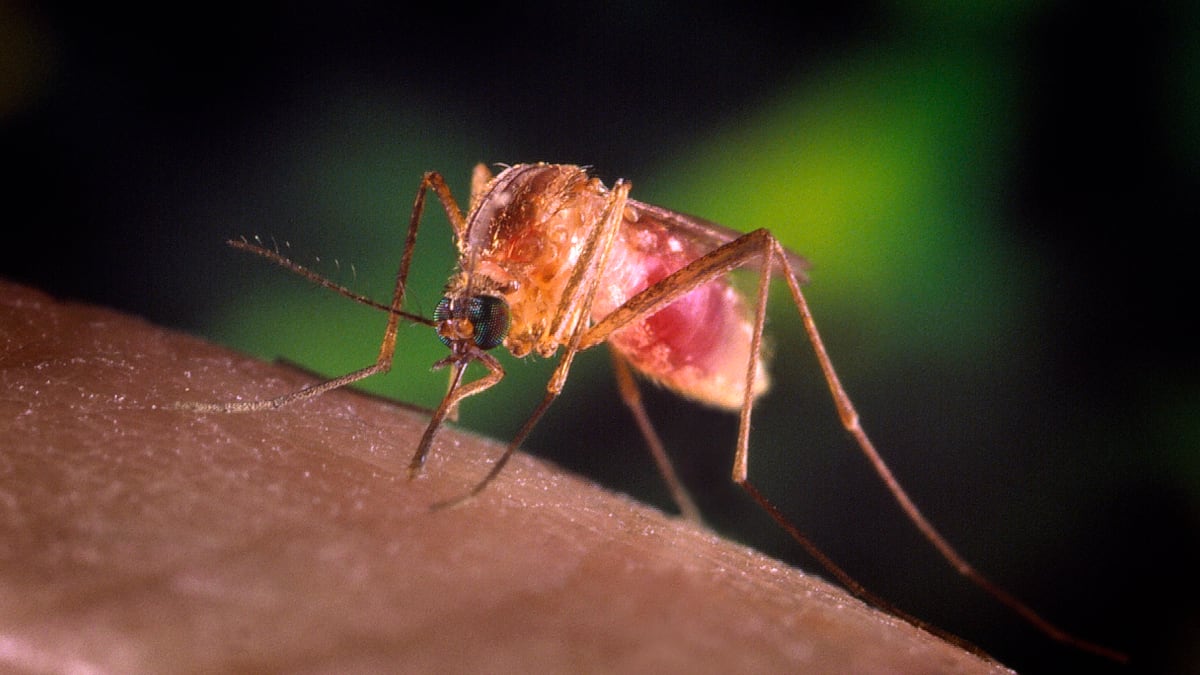West Nile virus simply won’t go away. So far this summer, it has hit the South—Texas, Oklahoma, Louisiana, and Mississippi—sickening 693 people nationwide and killing 26. According to the CDC, this is the highest number of cases identified so early in August since West Nile first burst onto the scene in 1999. As with those first cases, symptoms from the recent spate of infections have ranged from the inconvenient fever to diffuse brain infection (encephalitis), coma, and death. And for West Nile in 2012, there remains no vaccine or proven therapy, though medications that modulate the body’s inflammatory response, such as interferon, may have possible benefit in treatment.
It’s not clear how far it’s going to spread this summer, but a good guess is, it will stay put. West Nile is odd that way. Every season seems to bring a new viral hot spot and with it, a new geography of mosquitophobia. In the 14 years we have worried about it, it has seen most of the U.S. First, famously, it appeared among older men who liked to linger on the front porch in Queens, New York. But a few Augusts later, Chicago and the Midwest got clobbered by thousands of cases while Queens was quiet. And a few years after that, it was all over California and then the Dakotas and then here and then there till this August, when it arrived to stay a spell in poor Dallas.
And that’s probably where it will remain—as in previous years, once it settles onto the summer’s target, West Nile kinda just stays there. Yes, there’s a case or two in Maryland and Indiana (and still more in the Dakotas), but these venues likely will stay tame compared with the fear and illness electrifying the Lone Star State. Sure, once the headlines lose interest in Paul Ryan (soon, please) and Mitt’s income taxes and whether or not these Olympics were the best ever, we’ll see an uptick of attention and panic—but mostly, for New York City and the East Coast, this just ain’t our year.
ADVERTISEMENT
However, it will be our year one August or another in the future. In the U.S., West Nile is the lead member of a large and persistent group of infections transmitted by humanity’s great nemesis, the mosquito. No other animal in history (except other humans) has killed more people than the mosquito. In most of the world, malaria, which still kills a million or more persons a year, is the main mosquito-mediated scourge; in the Caribbean, it’s dengue fever. But now, in the U.S., after years of worrying only about itchy bites, the persistence of West Nile every summer means that we finally have a public health—not a personal comfort—reason to fear the little buzzers.
The crux of the problem is this—mosquitoes have a fatal attraction to blood. Correct that—female mosquitoes want our blood. Male mosquitoes, those hippies, live off fruit and flowers: what a fine, fine group. It’s the females that need heavier nourishment in order to produce a robust batch of eggs. They take a blood meal (that’s where people come in) but spill a little virus in the act, inoculating us with a dose of West Nile while intoxicating themselves with bright red blood, True Blood-style.

We aren’t the only animals they like to snack on—birds and horses are favorites as well. Birds, unlike mammals, are superb hosts: once infected, they permit extremely high amounts of virus to multiply in their bloodstream, providing an easy means for the next blood-sucking mosquito to become infected, assuming it can get there before the bird drops dead out of the sky splat! onto the ground. Not so for humans and horses, which don’t allow that sort of industrial-strength virus to circulate—though we do have more than enough to make us quite ill indeed.
This year’s epidemic is young, so that the finger-pointing hasn’t started up yet—but it will. With every epidemic or natural disaster, first comes the disease, then the sympathy, then the accusations, and finally, the fleet of eager, freshly shaven lawyers ready to right the wrongs. Human disease moves from tragedy to cash cow, often within days.
Now, then, is a good time to clarify just why this happens as it happens where it happens. I mean why August, of all months—those mosquitoes have been biting all summer long. But sorry—as with most infections, we really haven’t a clue. The left would hang the blame on global warming or human incursion too deep into nature, which has given us more time for mosquitoes to do their stuff —but please, Dallas is always ridiculously hot; another five degrees might require a larger air conditioner, but would have no impact on the life cycle of the mosquito. The right would hang the fault on environmentalists such as Rachel Carson and that crowd of pussyfooters who won’t let us use manly pesticides like DDT to carpet-bomb the insects back to the Middle Ages—why those wimps even chicken out when we want to run a few airplanes overhead to dust over with a little DEET or other pesticide.
The truth is that West Nile returns every August because of—get this—too much stagnant water, a problem that, alas, is solely from human neglect. Once the mosquitoes have sucked our blood and their eggs have matured, they need a place to lay them. And off they go to that glaring public-health menace—stagnant water—the most important man-made (and man-correctable) contributor to West Nile. In Queens in 1999, it was the small fill-’em-up-with-a-garden-hose backyard pools that were so inviting to the pregnant mosquitoes, or else the bird bath someone got for Father’s Day. But countrywide, it’s car tires. In the U.S., we discard more than 200 million tires a year—the large majority ending up in landfills, their inner curve a perfect place for a little rain water to sit and sit and sit—the perfect mosquito hatchery. Indeed, a related viral infection found in Asia, chikungunya, has spread globally because of the used-tire trade.
Yet it’s hard to imagine this message surviving the sparkle and dance of the evening news even when pitched to a wildly fearful public. After all, August, the laziest month, is a time of dread and regret—another summer wasted, another school year hovering at the near horizon, another gut-wrenching presidential election a moment away. Against these complications, there’s simply no time or inclination to be adult and clear the decks—a lapse that gives our old adversary, the mosquito, just the opportunity it needs to once again seize the upper hand.






